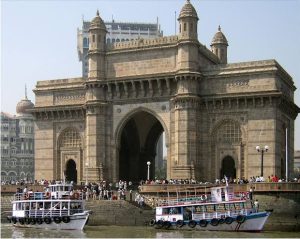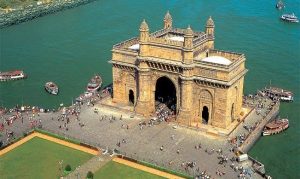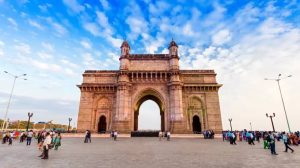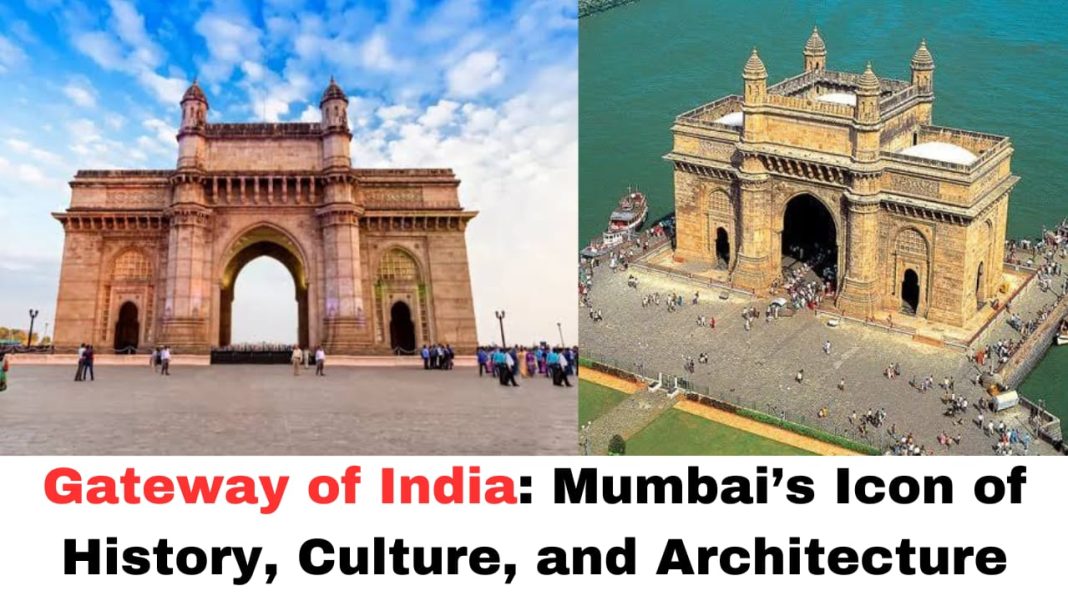Digital News Desk Education Desk:
The Gateway of India stands as one of Mumbai’s most iconic landmarks, a grandiose structure that embodies the city’s rich history, architectural brilliance, and enduring cultural significance. Situated on the waterfront in the Apollo Bunder area, overlooking the Arabian Sea, this magnificent archway has been a silent witness to the many transformations of Mumbai, formerly Bombay, and remains a magnet for tourists, historians, and locals alike.
Gateway of India: Historical Significance
The Gateway of India was conceived to commemorate the visit of King George V and Queen Mary to India in 1911. The foundation stone was laid in March 1913 by the then-Governor of Bombay, Sir George Sydenham Clarke, although the royal couple never saw the completed structure. Construction began in earnest in 1915 and was completed in 1924. The monument was inaugurated by the Earl of Reading, who was then the Viceroy of India.

The Gateway also served as a ceremonial entrance to India for British governors, viceroys, and other dignitaries during the colonial era. For many, it became a symbol of imperial power, a testament to the British Raj’s architectural and cultural imprint on India.
In a poignant twist of history, the Gateway of India also witnessed the departure of British troops in 1948, marking the end of colonial rule. This dual symbolism of arrival and departure encapsulates India’s journey through colonialism and its eventual independence.
Architectural Marvel
The Gateway of India is an architectural masterpiece designed by Scottish architect George Wittet. It represents a unique blend of Indo-Saracenic architecture, with influences from Islamic and Hindu styles, showcasing intricate latticework and decorative motifs.
The structure, standing 26 meters tall, is constructed from yellow basalt and reinforced concrete, with its central arch flanked by four turrets and intricate carvings adorning its surface. The design draws inspiration from the triumphal arches of Rome while incorporating traditional Indian elements, reflecting the synthesis of Eastern and Western architectural traditions.

The surrounding promenade amplifies the grandeur of the Gateway, offering panoramic views of the Arabian Sea and serving as a bustling hub for locals and visitors alike.
Cultural and Social Relevance
Beyond its historical and architectural significance, the Gateway of India has emerged as a cultural icon and a focal point for gatherings, celebrations, and protests. It is a space where locals enjoy leisure activities, street vendors sell their wares, and tourists capture memories of their visit to Mumbai.
The monument is also an entry point to the Elephanta Caves, a UNESCO World Heritage Site located on an island nearby. Ferries operating from the Gateway connect visitors to these ancient rock-cut caves, further enhancing its role as a gateway not just to India but also to its rich cultural heritage.
Moreover, the Gateway has been immortalized in Bollywood movies, literature, and art, cementing its status as a symbol of Mumbai’s cosmopolitan spirit and its status as a cultural hub.
A Modern-Day Tourist Magnet
Today, the Gateway of India is one of Mumbai’s most popular tourist attractions, drawing millions of visitors each year. Its iconic silhouette against the azure waters of the Arabian Sea is a sight to behold, especially at sunrise and sunset. Photographers, history enthusiasts, and casual visitors alike are captivated by its charm.
The area around the Gateway bustles with activity. Street food stalls offer local delicacies like vada pav and pani puri, while nearby attractions such as the Taj Mahal Palace Hotel and Colaba Causeway Market add to the allure of the location. The promenade is also a favorite spot for families, couples, and friends to relax and enjoy the sea breeze.

Preservation and Challenges
Despite its grandeur, the Gateway of India faces challenges related to preservation and urbanization. Pollution, weathering, and the constant influx of tourists pose threats to the structure’s integrity. Efforts have been made by the Archaeological Survey of India and local authorities to maintain the monument, including periodic cleaning and restoration projects.
Security has also become a priority in the wake of incidents like the 2008 Mumbai attacks, where the Gateway area was a point of entry for perpetrators. Enhanced surveillance and security measures have been implemented to ensure the safety of visitors and the preservation of this iconic site.
Symbolism in Contemporary India
The Gateway of India stands as more than just a historical relic; it is a symbol of Mumbai’s resilience and India’s transformation. For a city known for its diversity and dynamism, the Gateway represents the spirit of openness and acceptance. It is a reminder of Mumbai’s role as a financial, cultural, and social melting pot, attracting people from across India and the world.
The monument’s dual identity—as a symbol of colonial oppression and as a marker of India’s independence—reflects the complexities of the nation’s history. Today, the Gateway serves as a space for both celebration and reflection, a testament to Mumbai’s and India’s enduring legacy.
Conclusion
The Gateway of India is not just a landmark; it is a narrative carved in stone, telling the story of a city and a nation. From its colonial origins to its role in modern-day Mumbai, the monument has transcended time and continues to inspire awe and admiration. Whether as a tourist destination, a cultural emblem, or a historical reminder, the Gateway of India remains an indelible part of India’s identity—a gateway to its past, present, and future.
You May Also Read: The Statue of Unity: A Monument of Strength, Unity, and National Pride








